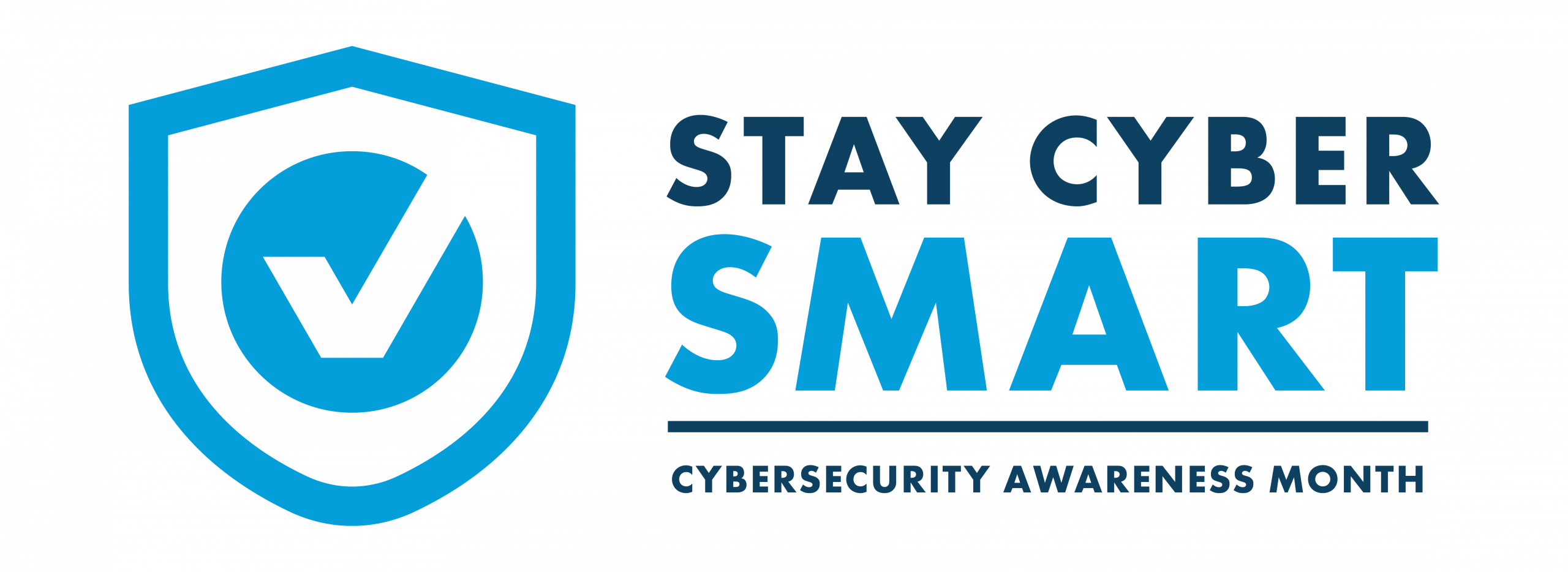Why Setting Strong, Unique Passwords Is Key

It’s October, which means two things in North Dakota: the leaves are changing, and we’re here to help you Stay Cyber SMART! Here’s how:
- Set strong, unique passwords.
- Make multifactor authentication a habit.
- Avoid risky links, attachments, and senders.
- Regularly do software and device updates.
- Take care with personal info.
Be the Top Dog With Your Password Game
Here at NDIT, we’re kicking off our Cybersecurity Awareness Month campaign with the first—and arguably most important—step in securing your digital life: setting strong, unique passwords.
Think of your password like the lock on your front door. Would you sleep well at night if that lock could be picked in under five seconds? That’s what it’s like using “password123” or your dog’s name as your password. (No offense to Buddy, Fluffy, or Winston.)
Let’s break it down—what makes a password strong, what makes it weak, and what you can do today to keep your information locked up tighter than a bone in a bulldog’s grip.
What Is a Password, Really?
A password is the digital key to your personal or professional life. It protects things like your:
- Email accounts
- Phones and tablets
- Online banking
- Social media
- State agency systems
- And just about everything else you care about
Passwords have been around forever. Even centuries ago, Roman soldiers used secret passphrases to prove loyalty and gain access to guarded areas. (Rabbit hole: Maybe that’s where the popular dog name, Tiberius, came from?)
Fast forward to today: instead of “Open sesame,” we’re using things like “Bulldog2025!” (Which, spoiler alert, isn’t strong either—we’ll explain.)
What Makes a Password Weak?
Let’s start with what not to do.
Predictable Info
Using personal details like birthdays, kid names, favorite sports teams, or hometowns might feel like a clever memory trick, but guess what? Hackers are looking at your Facebook, Instagram, and other public info. If you’re from Minot and your password is “MagicCity1982” ... well, let’s just say it might not stump a hacker for long.
Keyboard Patterns
Do your passwords look like this: “123456,” “qwerty,” or “!@#QWE123?” That’s what’s called a waterfall password. They look fancy, but attackers have seen it all before.
Sticky Note Syndrome
Writing passwords on paper, under your keyboard, or in a random notebook (next to your Wi-Fi login) is like leaving your house keys in the front door. Anyone walking by can waltz right in.
How Do Hackers Crack Passwords?
Great question! Hackers often use clever tactics like brute force attacks to try thousands (or even millions) of passwords in seconds. They use real-life leaked password lists—often found online after data breaches. And if you’re using a popular password like “letmein” or “iloveyou,” you’re in the doghouse.
Hackers don’t just guess passwords randomly. They try common words, use lists of stolen passwords, or try the same password on many accounts. Sometimes they mix words with easy swaps like “@” instead of “a.” They can also use tricks to break passwords hidden in code or just trick people into giving passwords with scams or viruses.
So, What Makes a Password Strong?
Glad you asked.
At NDIT, we recommend at least 15 characters that include:
- Uppercase letters
- Lowercase letters
- A number
- One special character (like !, @, #, or $)
For example, instead of using “hockey2025” (easy to guess), try something like “Gr!zzly_Socks27” or “D1nosaur-Banjo!58.”
Pro Tip: Create a password that’s all bark and all bite! By that we mean take things a step further by avoiding full dictionary words—they’re easy for hackers to crack. Instead, turn a personal sentence into a strong password by using the first letter of each word. For example: “My dog Winston came from North Dakota in 2016. He loves milk bones, walks, and naps.” becomes MdWcfND2016Hlmbw&n. It’s long, memorable, and tough to guess.
Don’t Just Set It & Forget It
Changing your password once every 365 days is a great habit, but don’t just make minor tweaks and call it new. (Changing “password” to “Password1” won’t fool anyone—especially not a hacker).
Make it completely different each time. No copy-paste jobs. No patterns. Just pure unpredictability.
And if your memory is failing you, try a password manager! This way, you don’t have to remember 42 different 15-character passwords on your own (unless you’re secretly Rain Man). A password manager is a digital vault that:
Securely stores your passwords
- Generates new strong passwords for you
- Requires just one master password to access the rest
- Can use multi-factor authentication, or MFA (which we’ll cover in our next blog post!)
While NDIT doesn’t recommend any specific password manager, we do encourage you to do your research. Look for tools that have strong security reputations, recent updates, MFA login support, and no recent data breaches.
And, most importantly, never save passwords in plain text files on your desktop. That’s like burying a bone but leaving the dirt exposed for everyone to see. (We’re looking at you, “passwords.docx.”)
Call to Action: Test Yourself
It’s important to ask yourself the right questions: Are my current passwords strong and unique? Do I reuse passwords across multiple sites? Could someone guess my password from scrolling my social media? Am I relying on memory alone?
If you answered “yes” to any of these … it’s time to get to work. But first, let’s wrap up with a little password humor:
Q: Why did the hacker get kicked out of the doghouse?
A: Because he tried to crack the paws-word.
Passwords aren’t just a techy nuisance—they’re your first defense against cyber threats. So let’s treat them like the safeguards they are. Be smart. Be safe. And above all—Stay Cyber SMART.

